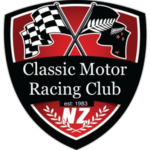The Fangio’s Toys article unearthed references to a Alfa Romeo 6C marine engine used in Argentine mecanica nacional cars. More research was in order. It turned out that there were two such cars, a 1930’s Grand Prix Alfa Romeo 8C, and an Argentine national formula one. The 8C had been crashed at Buenos Aries in 1949. Fangio swept up the pieces, intending to build a car of his own with them. But formula one got in the way and the Alfa marine engine eventually ended up in Alberto Crespo’s national formula winning car in 1951. But why a marine engine?


Motor sport was banned in Argentina during the war years as a fuel saving measure, but boat racing was not so affected, To continue getting their rocks off the car boys turned to boats and to the products of the Alfa Romeo marine engines division. The 6C “marino” was based on the automotive 6C 2.3 litre twin cam introduced for the Alfa road cars in 1934. They were over bored to fit within the international 150 cubic inch boat class rules and came with a stern drive semi outboard unit. Come WW2 and they were used for a particularly ropey job in light weight low draft “modified touring” hulls that had been adapted to carry a single torpedo. The low draft was necessary as the boats had to be able to run over the top off anti submarine boom defenses, the stern drives could be rotated clear of the top of the boom while this was done. (Google Torpedo and Explosive Boats to see this in action). The torpedo boats were twin engined with a two man crew. The attack mode was to approach the enemy at 30 knots or so, fire off the torpedo at close range, skip smartly sideways and get the hell out of there. This was pretty much a kamakazi approach. The wash from the boats was obvious to an alert enemy and a petrol powered wooden boat burns nicely. Two perfectly good Alfa engines down the gurgler. So a second approach was tried. Dispense with the torpedo, one crew member and one engine. Pack a small boat with explosives and put an impact detonator on the bow. Aim the entire contrivance at the target and abandon ship. Mmmm!
Here is an action report for one of these raids.

“On the night of March 25, 1941, there was one of the many intrepid assaults of Italian commandoes in British harbours thought up as a diversion for the fact of Matapan. Two destroyers Crispi and Sella approached 10 miles the Suda bay and lowered 6 small “Barchini” (they were tiny speedboats, very fast, full of explosive and driven by one man who had to aim the target ship and jump off the boat at the very last moment; it required of course an enormous amount of courage). These “Barchini” were lead by Tenente di Vascello Luigi Faggioni. They entered the harbour, where were 4 cruisers and many merchant ships. The result was cruiser York severely damaged (it would be totally destroyed later by German Stukas), one petrol ship damaged. The six braves were captured, and set free by Germans later”.
At least one of these “marino” engines found its way to South America and eventually into the two cars mentioned above. The Pessatti brothers had set up their ex Grand Prix 8C 35 to run with either its original racing engine, for formula libre races, or with the 6C for the “stock block” national formula ones. Alberto Cresco obtained it from Fangio as a replacement for the Plymouth engine used in his 1950 national formula “limitada” class wining car. It brought him the “free force” championship in 1951.
The photograph shows the Crespo car in its 6C engined form. Note that the exhausts are on the right hand side of the cylinder bank, while the road going 6Cs had them on the left hand side. (All Alfas were RHD right into the 50’s).
The twin engine torpedo boat images show port and starboard exhaust outlets, indicating that the marine versions came in either left bank or right bank exhaust configurations. Right up into the 1960s they found plenty of users in racing hydroplanes.
